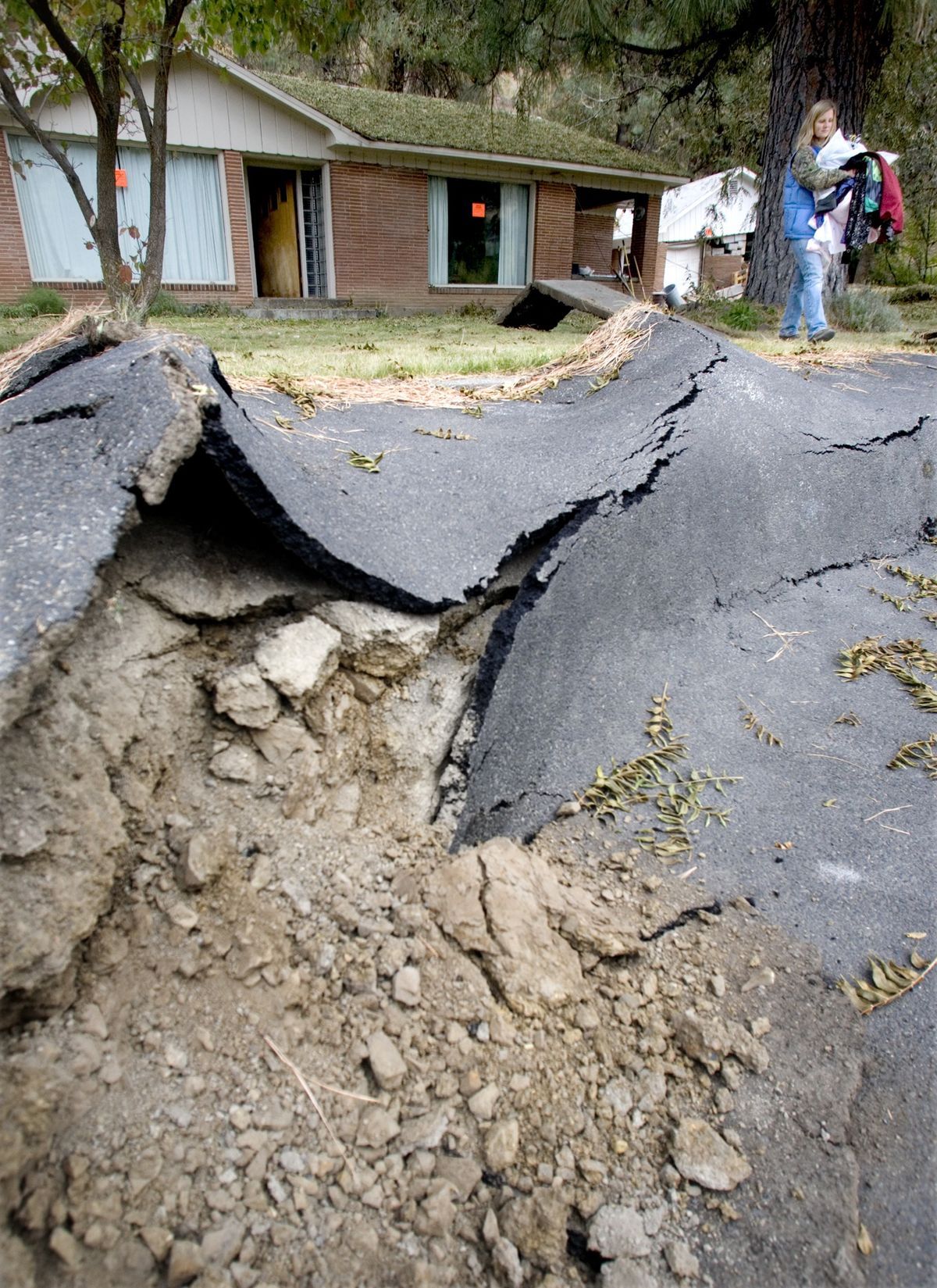Naches landslide puzzles investigators

The landslide that smothered a stretch of Highway 410 Sunday could be among the largest ever to hit a state roadway, but its cause remains a mystery.
“I’ve been around for 25 years, and this is definitely one of the biggest,” said Tom Badger, geotechnical engineer for the Washington State Department of Transportation.
Unlike the slides that pop up across Western Washington during rainstorms, the slide on the east side of the Cascades occurred on a clear morning. There was no earthquake in the vicinity, and DOT officials say they don’t believe a local rock quarry destabilized the slope.
“To be honest, right now we’re just trying to get our arms around this,” Badger said.
A DOT map identifies Highway 410 east of Chinook Pass as a region prone to rockfalls. But the agency hadn’t singled out the section that slid as a particularly risky slope.
“We haven’t had any problems with this area until now,” DOT spokeswoman Meagan McFadden said.
The highway west of the town of Naches probably will remain closed throughout the winter, McFadden said. The road will have to be rerouted around the massive pile of dirt and rock, which is up to 40 feet deep in places and covers more than one-quarter mile of pavement.
“Right now, it doesn’t look like 410 will be where 410 originally was,” McFadden said.
Engineers and geologists flew over the slide Monday and poked around its edges. They found that the slide has continued to move slowly downhill in some places.
“It’s kind of creaking and groaning at this point,” said Dave Norman, state geologist for the Department of Natural Resources. “Nobody would want to go up and stand on it.”
By later in the afternoon, the main slide appeared to have stabilized.
But officials were keeping watch on an adjacent section of slope where cracks and stress fractures had appeared.
Construction will start today on a temporary dirt road to provide access for approximately 1,500 people who live along the Naches River and adjacent valleys.
The slide slammed into the river, and the riverbed itself was uplifted dozens of feet. Jason Smith, DOT’s regional environment manager, found a chinook salmon and a rainbow trout high up in the pile of dirt.
Displaced from its banks, the river flooded over the Nile Loop Road, a main route for many residents.
The director of the Yakima Valley Office of Emergency Management told the Yakima Herald-Republic that damage could run as high as $20 million.
The slide probably was a “rotational slump,” University of Washington geologist David Montgomery said. A big hunk of the valley wall basically slid along a scoop-shaped fracture line. As the top of the slope slumped, the bottom was thrust upward.
Rotational slides can be triggered by rain — but it could be rain that fell a year ago or more. The water percolates deep into the ground, creating hidden weakness, Montgomery said.
“There can be months to years of delay,” he said.
Gravel mining also can trigger major landslides if operations undermine the toe of an unstable slope, Montgomery said. “That is one of the textbook examples used as a general factor that contributes to slope instability,” he said.
DNR inspectors saw evidence in the past of slope movement at the gravel pit in the slide area, Norman said. At the agency’s request, the owners conducted an engineering survey and made regular measurements to detect slipping.
“The report concluded this was an area with some soil creep, but it didn’t anticipate any kind of catastrophic failure,” Norman said.
The operation, Simmons & Son Hauling and Rock Crushing, covered about 10 to 15 acres.
The quarry was on the western margin of the slide area. DOT officials say they believe the operation was too small to have undermined the slope.
Owner Robin Simmons was at the site a few hours before the hillside let loose.
“It was rumbling,” she said. “Kind of like when kids drive by with these boom boxes in their cars.” She and her staff worked frantically to move equipment, but soon were warned to evacuate.
The slide buried much of the pit and swallowed up a rock crusher, a crane and a loader.
“That was our livelihood, and it’s gone,” Simmons said.
Two nearby homes owned by family members were destroyed or damaged.
Simmons is convinced the pit was not at fault.
“Mother Nature did what she planned on doing.”